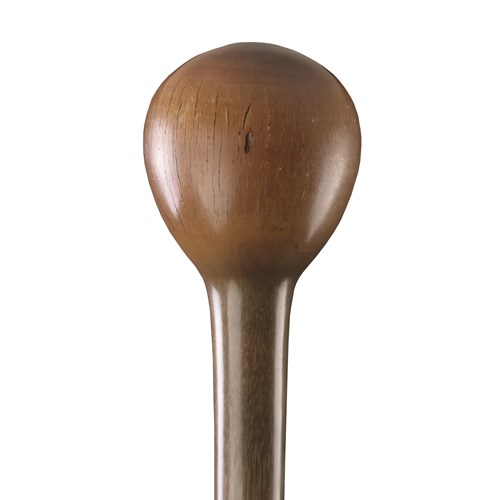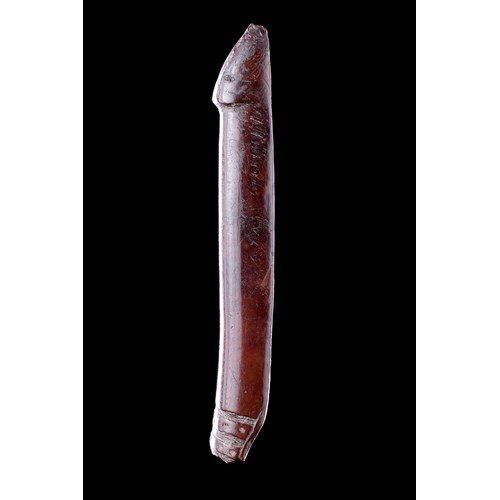Fine Celtic Arm Ring of Cast Copper Alloy Thick Overall Construction Twisted with Flattened Terminals
Period 1000 BC-800BC, 800 BC - 600 BC
Medium copper alloy
Dimension 11.5 x 12.5 x 1 cm (4¹/₂ x 4⁷/₈ x 0³/₈ inches)
Western Europe
8th Century B.C.
Size: 11.5cm high, 12.5cm wide, approx 1cm dia. - 4½ ins high, 5 ins wide, approx ³⁄₈ ins dia.
Period: 1000 BC-800BC, 800 BC - 600 BC
Medium: copper alloy
Dimension: 11.5 x 12.5 x 1 cm (4¹/₂ x 4⁷/₈ x 0³/₈ inches)
Provenance: Ex Private collection Walton-on-Thames acquired 1930’s - 1960’s
Ex Jon Lawton collection U.K
Jon Lawton acquired the piece from a neighbour in Walton-on-Thames who in the early 1970’s had inherited the piece from her late husband who had been collecting
from the early 1930’s through to the late 1960’s
Literature: The classical writers were all agreed that the Celts were a dramatic looking people, quite distinctive in their appearance. Personal appearance was clearly a matter of some concern to the Celt. The archaeological evidence show that women used mirrors as well as tweezers, presumably for plucking hair. Metal jewellery is one of the most significant features of Bronze Age life, it has been discovered as valued grave goods, buried with men and women alike. The wealthiest burials were those of warriors and princes, often containing exquisitely made bronze swords, spears, and jewellery. It was a very important part of most Bronze Age societies, and something that held great value as a major part of their identity. Neck torques had a magical significance. Sometimes the Celt would go into battle naked but for his neck torque, which he believed would protect him from danger. Gold and Bronze bracelets or arm rings were popular among the aristocracy. They were usually elaborately decorated by the Celtic craftsmen working in the courts of the aristocracy.
More artworks from the Gallery









